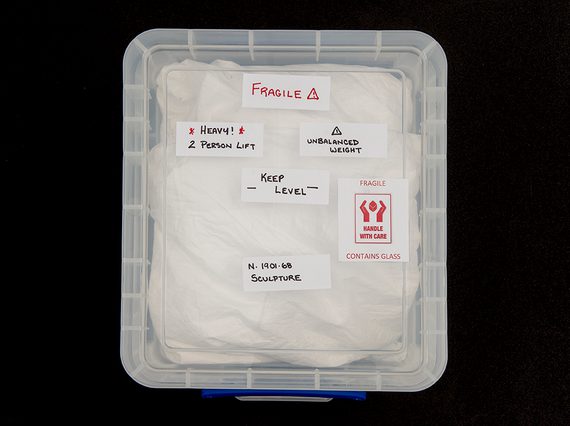
Object packing
After good handling practices, the next most important skill to apply to consulting and moving collections is good packing. This training sets out our guidelines for the best methods and materials for packing objects.
| This training is for | Level | Length | How to complete the training |
|---|---|---|---|
| People who work with museum collections | Beginner | 2hrs (approx) | Complete the Object Handling training first, then follow the sections below in order, read the added resources and watch the videos |
Object packing: best practice
Good packing should provide protection from dust, dirt, environmental changes, vibrations and surface abrasion as well as providing support and stability to the object.
To decide which packing method and materials to use, assess every object individually. Even similar objects can require different packing solutions.
The following guidelines should be considered in conjunction with good handling practices. Example method statements are listed on each page to print and use as a template to create your own, specific to the objects you are packing.
This page outlines guidance and best practice around object packing, before we detail packing methods for each of the following:
Plan before you pack
As with all collections work, planning in advance is best practice. When it comes to packing, good planning limits the need to handle objects unnecessarily and ensures the correct equipment and supplies are on hand to guarantee the packing will be suitable.
There are five things to consider when deciding how to pack an object, outlined below.
| Issue | What to consider |
|---|---|
| Material | What is the object made of? Which packing supplies are most suitable for the material type? |
| Condition | How stable is the object? Do any areas require extra support or protection? Are there any areas of existing or previous damage? |
| Size, shape & weight | If in a box, is it the right size – does the object fit comfortably? Can it be removed easily? Is there wasted space? Could it get lost in the packaging? Is it an awkward shape – how can this be combatted? Will the container be strong enough for its weight? |
| Transportation | How long will the object remain packed? Will it be packed and unpacked several times (for example, objects being toured)? |
| Destination | If going into storage, will it be static or moving storage? Does the object need to be easily accessible – is it often consulted? Who will be unpacking the object – someone who hasn’t seen it before? |
Which materials to use
It is important to use inert, chemically stable packing materials. This way you can be sure no chemical reactions will take place between the object and the packing material over time. Packing materials should be suitable for the object, cost effective and flexible for multiple uses. This way the same materials can be used across collections for numerous packing solutions.
Packing for short or long term should be considered. For example, using materials like bubble wrap can be an ideal way to provide temporary support and protection for transportation but should not be used long-term as the plastic will degrade over time.
National Museums Scotland have a standard range of materials we have identified as chemically stable, flexible and suitable for long-term use across collections:
- Acid-free tissue
- Acid-free board
- Plastazote® foam (closed cell, inert foam)
- Polyethylene sheeting
- Polyethylene bags
- Tyvek® sheeting (synthetic material made of flash spun polyethylene fibres)
- Stainless steel pins
- Unbleached cotton tape
- Correx® board (corrugated plastic sheeting)
- Melinex® envelopes (archival polyester clear sleeves)
In addition, we use bubble wrap, jiffy foam and ordinary cardboard boxes and paper for short-term packing. But it is very important to be sure that the packing is only short-term. If using bubble wrap, make sure to have the bubbles facing outwards as pressed inwards they have been found to make impressions on several surface types.
Which materials to avoid
Avoid the use of polystyrene, newspaper, wool, felt, wood, tape and biodegradable materials in packing as they have the potential to degrade, release harmful gasses or transfer acidity to objects – all of which will damage collections. Organic materials like wool and felt can both off-gas and attract pests which will later go on to damage objects.
Re-use
Collections-appropriate materials can be expensive. For that reason, many of the methods described here are designed so that materials can be reused: clean tissue puffs can be checked for pests and reused; pinning set-ups can be re-cut and adjusted to pack other collections.
Soft-wrapping can be difficult to re-use depending on the tape used but the layers of jiffy and tissue can be reused to pack other objects or framed works.
Bespoke packing is the exception, being costly both in terms of time and money. It is advised these are used only when the object is particularly fragile, of special interest (consulted regularly) or subject to regular transit (ie, touring). It is in these cases that the additional expense may save time and money in the long-term.
Labelling
As mentioned above, a key aim of good collections handling is limiting the extent to which an object is handled. One way in which this can be achieved is ensuring an object is labelled within its packing, stopping the need to pick-up or unpack the object to identify it.
A further element of labelling, important to good collections packing, is the need to ensure labels guide the handler to the safest way to unpack the object (for example, instructions to unpin a particular block first). The packaging may seem simple and straightforward to you but remember it may not be to someone who comes to unpack the object in a few years time.
Object packing by method
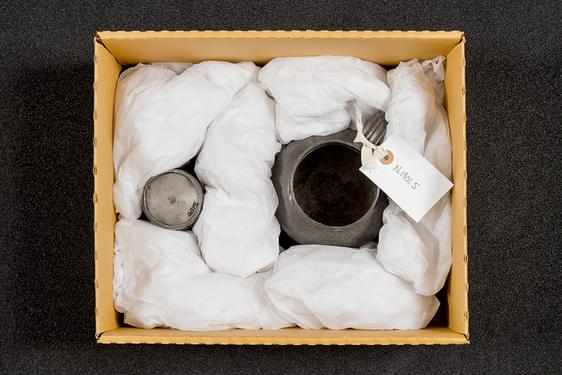
How to use tissue puffs
Tissue puffs are a quick and flexible method of packing objects.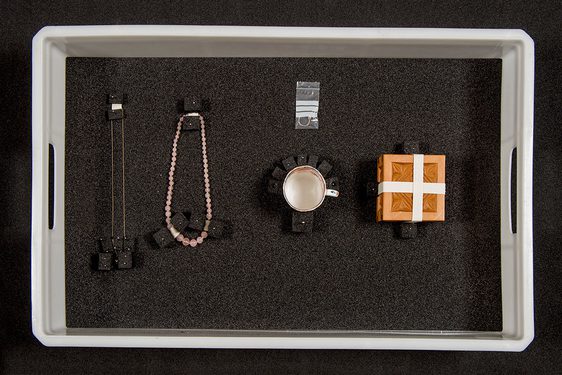
How to pack with pinned plastazote
Objects with a stable and robust surface can be held in a container using the pinning method.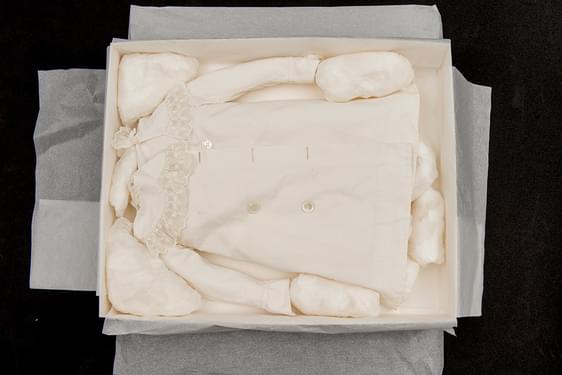
How to pack textiles
Textile creases cause splitting and can require interventive conservation treatment.
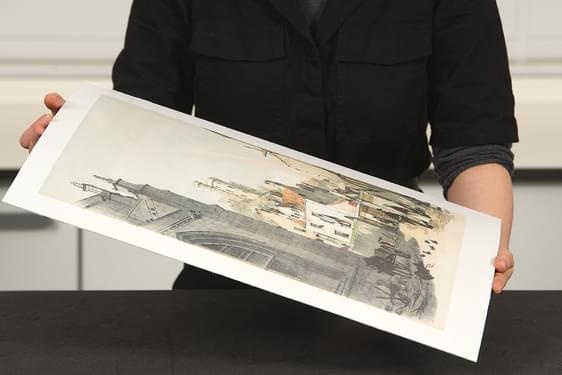
How to pack paper and unframed artworks
Thin paper items can be stored or transported in Melinex sleeves or between sheets of acid-free tissue.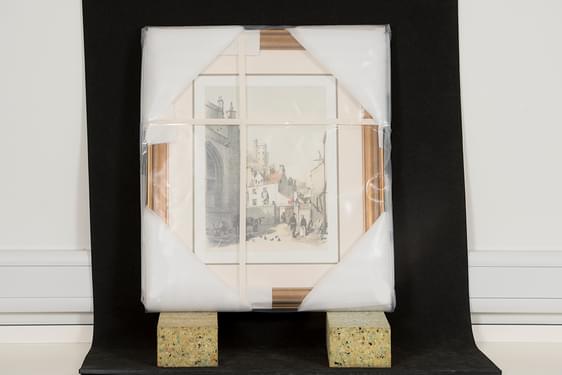
How to soft wrap objects
Soft wrapping can be used to pack large or awkwardly shaped objects.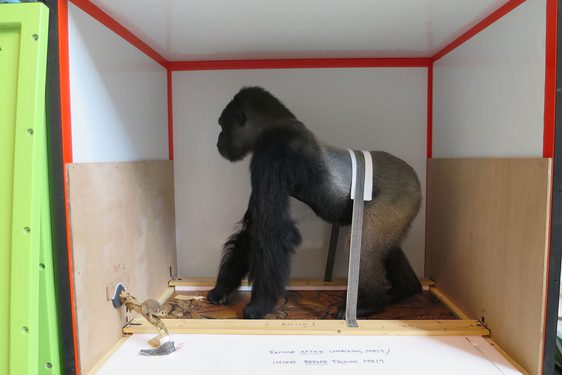
How to pack and use bespoke boxes and crates
Bespoke boxes and crates are expensive, but can provide one of the best forms of protection.
Further training resources

Object handling
This training sets out our guidelines and best practice for handling museum collections.
Object labelling
This training sets out our best practice guidelines for labelling objects in museum collections.
Integrated pest management
This training sets out our guidelines and best practice for integrated pest management.